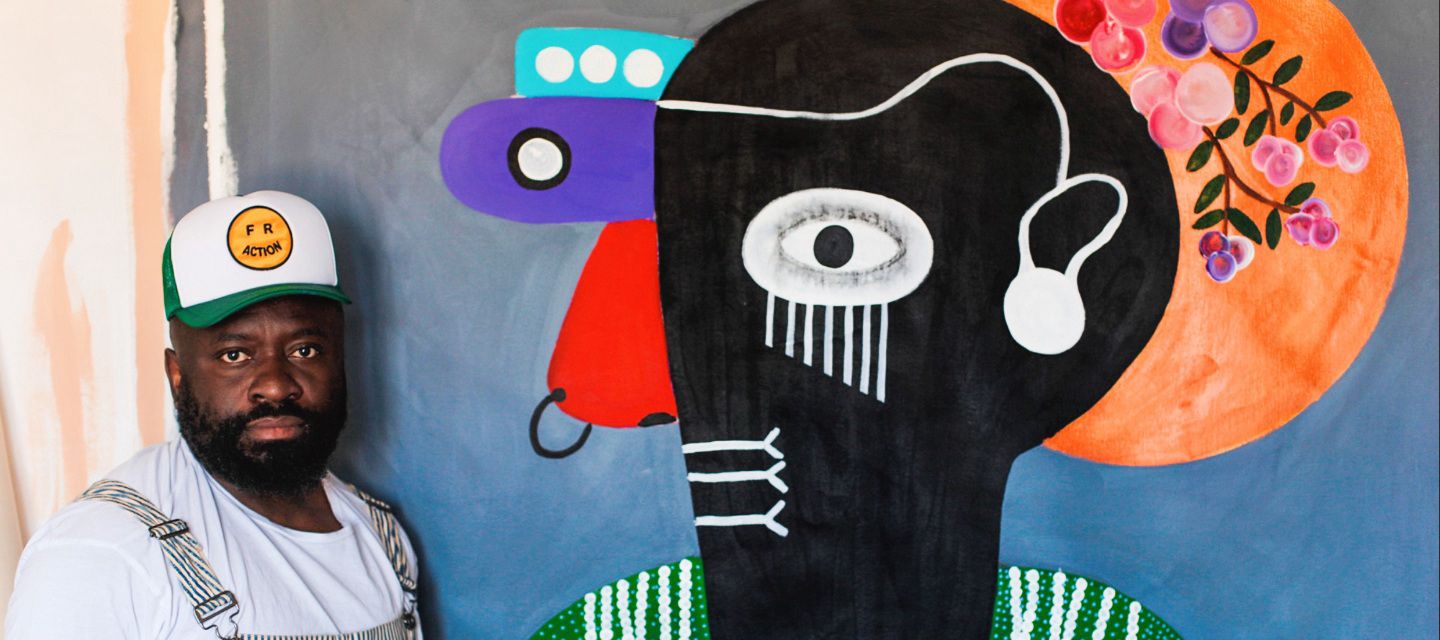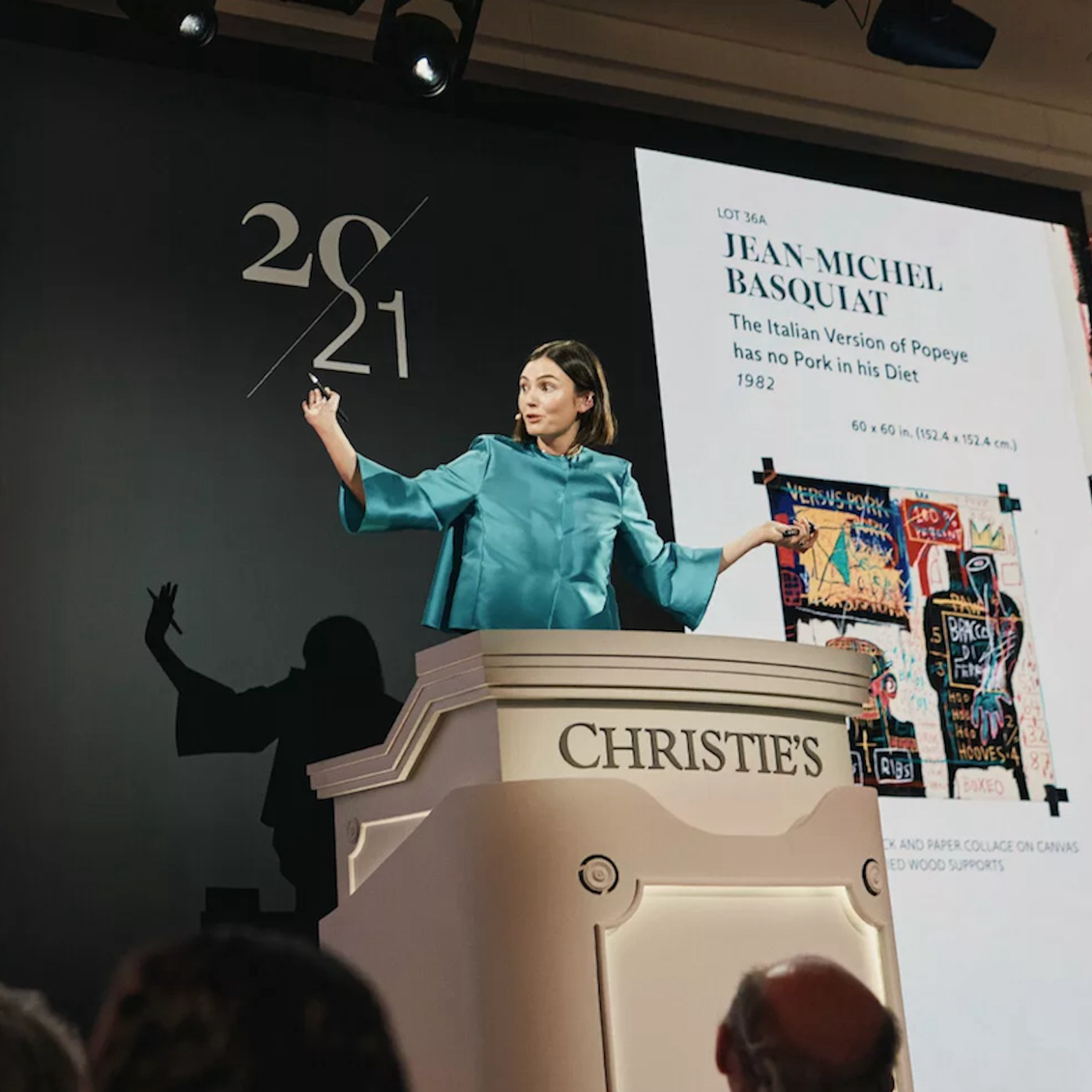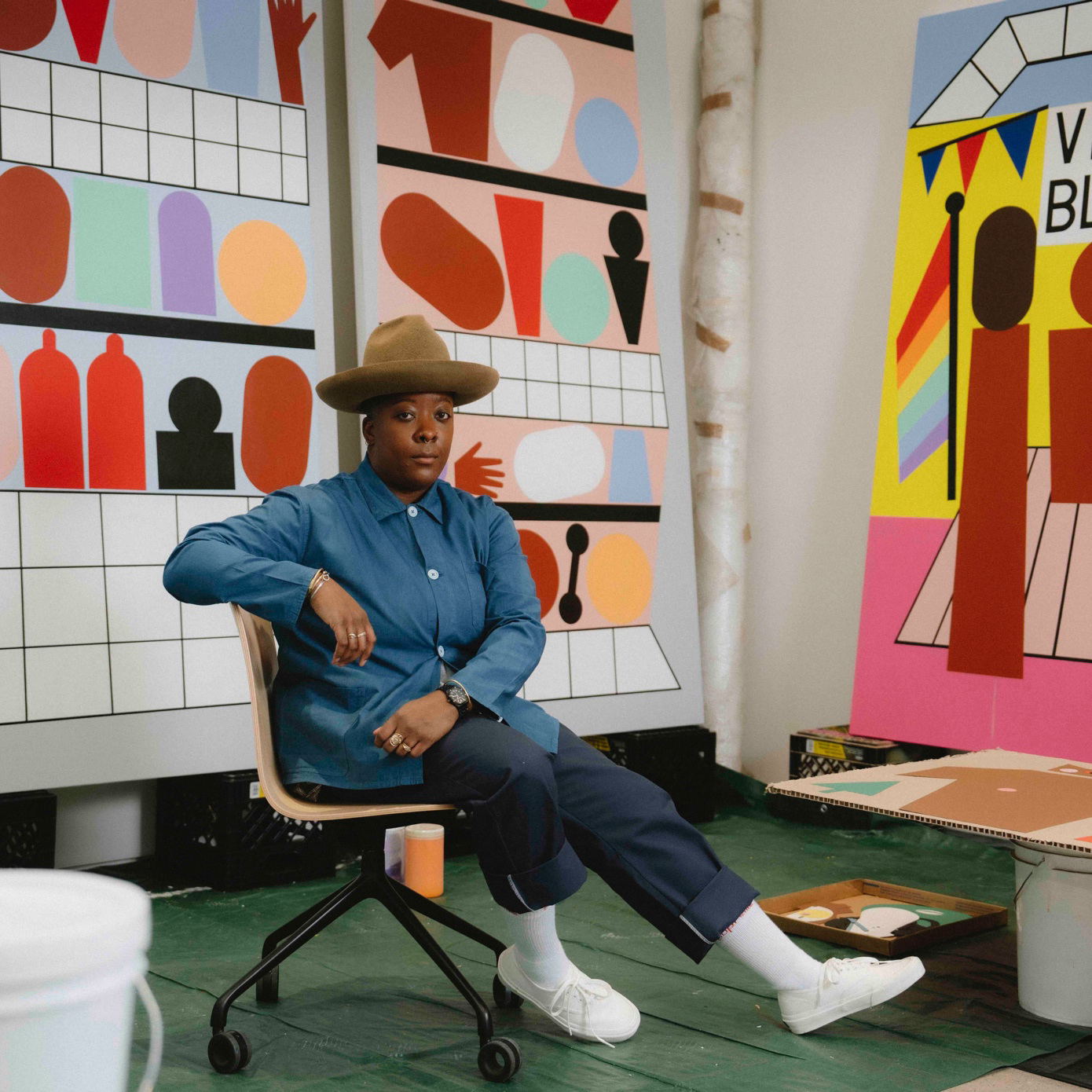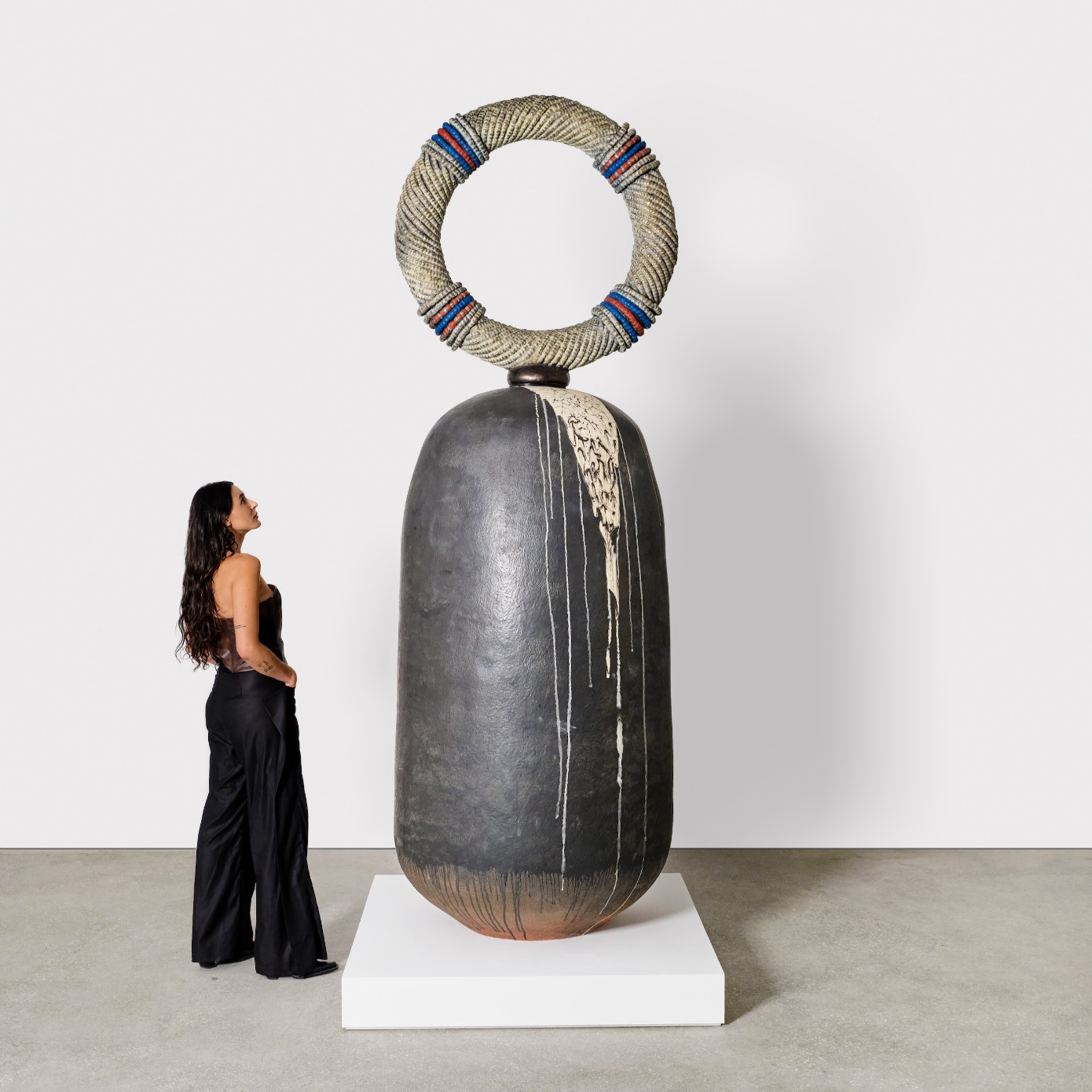At first glance, Kojo Marfo’s paintings are striking creations depicting stark faces and fecund foliage. But these artworks are more than just pretty pictures: they reveal deep-seated stories in their allusions to traditional Akan artifacts, carvings and sculptures that the artist first encountered in his youth, growing up in Ghana. On view at JD Malat Gallery’s New York pop-up through June 4, his first solo show in the city, “Gatekeepers of Heritage,” exemplifies these connections in eight new figurative works.
“I want people to see my work as a reflection of my Akan culture and my struggles living in the West,” says Marfo who moved to Brooklyn, New York as a teenager, and now lives and works in London. “When I'm painting someone, I always look for inspiration to keep me going and reference African magazines and photos.”
In Stranger #12 (2022), an abstracted figure with an oblong face, dilated pupils and saucer-shaped eyes stares at the viewer from against a black background. These physical attributes are direct references to akua’ba, round-headed Ghanaian fertility dolls that older women typically give to younger women of childbearing age.
Other works in the show also nod to aspects of African history. Fortitude (2022) shows two figures on a gray plane. The one on the left dons a ruby red shirt, strings of pearls and a bright burgundy glove. It’s hard to miss this final detail, as the subject’s hand sits prominently in the bottom corner of the painting. The work, says Marfo, is a commentary on the physical cruelty of Western colonizers in Africa.
“This work is based on historical images from Africa during the height of colonialism,” says the artist. “If colonizers thought you were lazy, they gave you proper beatings and chopped off your hands.” The short arm of the figure on the left depicts this brutal act.
Much of Marfo’s desire to tell these stories stems from his childhood on the continent. Born in Ghana in 1980, Marfo expressed an interest in imagery from an early age, looking at everything from Akan carvings to Catholic altarpieces. However, he didn’t hone his skills until he was a teenager, when he moved to Brooklyn and began his career as an artist.
As Marfo told GQ magazine’s Thomas Barrie in 2020, the painter began to draw inspiration from different creators—including Pablo Picasso, Fernand Léger and Francis Bacon—while developing his own self-taught practice. Eventually, Marfo began to integrate social commentary into his work, always emphasizing the idea that people can better understand each other through a visual language. His work is inherently political, based on its subject matter, but the artist’s intention is to converge rather than divide over it.
"I do my best to make sure that by bringing people together, you become the conduit for change,” the painter told CNN earlier this year. “You have to promote understanding.”




